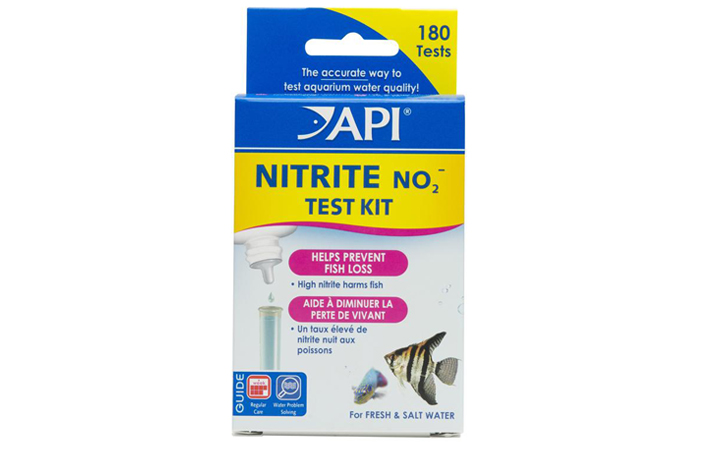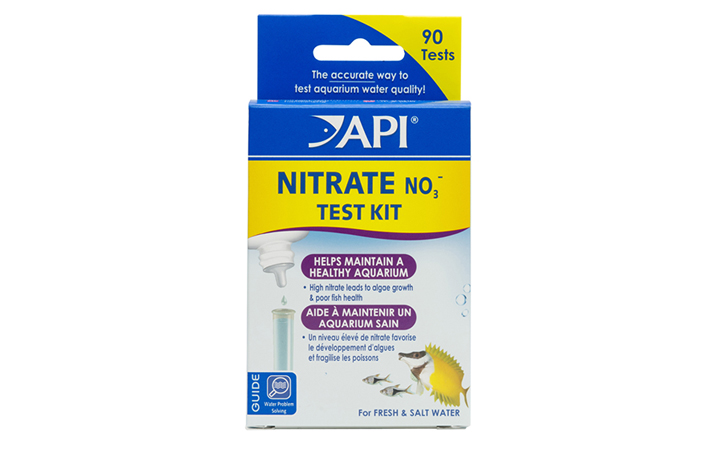Here's the third of a five-part series of lessons to guide new aquarists through the basics of fishkeeping.
Week 1, Day 3: Water quality
For freshwater aquarium purposes, water quality refers mainly to the chemicals Ammonia, Nitrite and Nitrate. These chemicals are results of the metabolic processes of fish and must be controlled in order for us to keep fish alive.

Ammonia
Ammonia is raw fish waste. It is produced by:
Uneaten food.
Dead organic matter (dead fish and plants).
Direct excretion from fish.
Ammonia exists in two forms in aquaria, and those forms are related directly to the pH value of a tank.
The interplay of pH and ammonia means that in acidic conditions, ammonia takes the form of harmless ammonium, NH4+. In alkaline conditions, it takes the form of harmful free ammonia, NH3. Alkaline tanks are at a higher risk of ammonia problems than acidic ones.
Temperature also has an effect on the ammonia/ammonium ratio. Higher temperatures produce more ammonia, and lower temperatures produce more ammonium. This means that in hot, alkaline tanks, such as Lake Malawi biotopes, the presence of ammonia is especially dangerous.
When using a test kit, the results will usually show the total ammonia in the tank — the sum of all free ammonia and ammonium combined. Any test for free ammonia requires you to know the temperature and pH of the aquarium being tested, in order to calculate the amount of harmful ammonia present. The following chart shows the ammonia values at a range of pH and temperature values in freshwater.

Ammonia toxicity varies from fish to fish but the maximum safe freshwater value as advised by OATA is 0.02mg/l free ammonia, NH3.
Ammonia levels can be reduced in an aquarium by:
Conversion in to nitrite by biological filtration.
Healthy plant growth.
Partial water changes.
Removal of causative factors such as uneaten food or dying plants.
Use of zeolite or other ion exchange resins.

Performing a 25% water change on the aquarium immediately and continue weekly until testing indicates ammonia level is 0 ppm.
Using API AMMO LOCK as directed to detoxify any ammonia still present.
Using API NITRA-ZORB in the filtration system.

Nitrite
Nitrite is a by-product of the conversion of total ammonia by filters, and is highly toxic in freshwater. Nitrite has the chemical formula NO2, and should not be confused with the similar-looking nitrate, NO3.
Nitrite toxicity varies from fish to fish, but the maximum safe freshwater value as advised by OATA is 0.2mg/l nitrite, NO2.
Nitrite levels can be reduced in the aquarium by:
Conversion in to nitrate by biological filtration.
Partial water changes.
Nitrite toxicity can be reduced in aquaria by using aquarium salt, NaCl, but this will not reduce the level of nitrite present.
Performing a 25% water change on the aquarium immediately and continue weekly until testing indicates nitrite level is 0 ppm.

Using API NITRA-ZORB in the filtration system.
Using API QUICK START to boost biological filtration.

Nitrate
Nitrate is the end product of ammonia and nitrite being successfully converted by aquarium filters. Whilst less toxic than ammonia and nitrite, it is still harmful, especially at elevated levels. High levels are also associated with algae growth in lightly planted tanks.
Unlike ammonia and nitrite, nitrate is often added to aquaria from contaminated tapwater, with concentrations that vary around the UK.
Nitrate toxicity varies hugely between species, but for freshwater aquaria a value of less than 50mg/l is desirable, while any levels over 100mg/l require immediate remedial action.
Nitrate levels can be reduced in the aquarium by:
Regular partial waterchanges, using replacement water that has a low nitrate level.
Denitrifying bacteria (frequently used in marine aquaria).
Ion exchange resins.
Healthy plant growth.

Performing a 25% water change on the aquarium immediately and continue weekly until testing indicates nitrate level is 20 ppm or less.
Using API NITRA-ZORB in the filtration system.

Click here for next lesson: Temperature
How to gain your diploma: Once all the course modules and revision pages have all been posted online, we will open a link to a website that allows you to take your free online exam. If you pass the exam, you will digitally receive your very own Fishkeeping Diploma, to show that you have successfully completed the course, and which is yours to display on the wall near your aquarium, hang in your fish house — or keep somewhere safe where you can take it out and just look at it from time to time.
Note: The Fishkeeping Diploma is not a formal or accredited qualification and should not be confused with the type of diploma presented by colleges, universities and other educational establishments.
Further reading from our sponsors
Treating common aquarium problems








